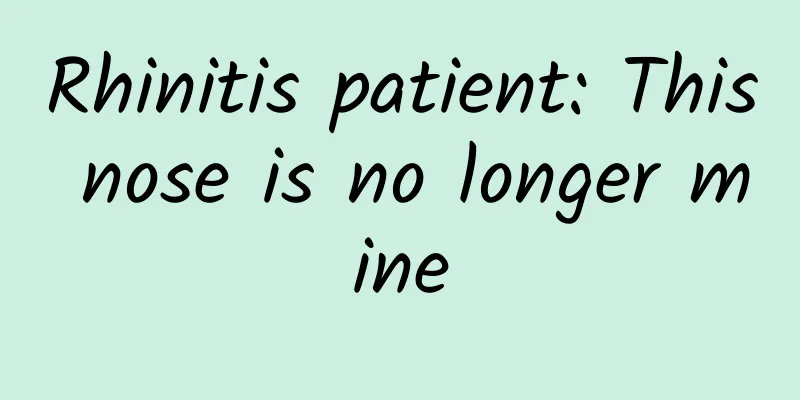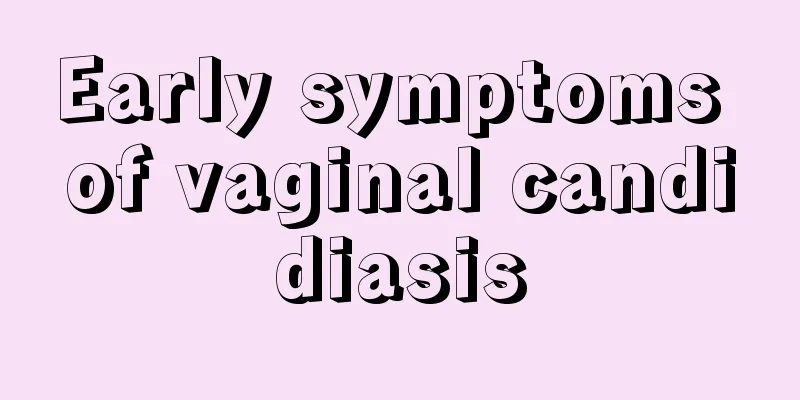Rhinitis patient: This nose is no longer mine

|
What is the experience of having a “red nose” like for patients with rhinitis? I can only say, "My nose is not my nose" is the biggest feeling of rhinitis patients... I believe that there are always a few people with rhinitis around you. When you go to work or class in the morning, you can always hear the sound of people blowing their noses. When you turn around, you will see that the other person's nose has been poked red, his mouth is slightly open, and he sighs deeply. In fact, for patients with rhinitis, this is just something they experience every day, especially when the seasons change. Rhinitis often occurs when the seasons change, when you stay in an air-conditioned room for a long time, when the autumn wind blows, when you catch a cold... Rhinitis is often caused by a cold. Some pollen-like irritants directly stimulate the nasal cavity, so it is not surprising that the struggle between good and evil in the nose is aroused. What we often call rhinitis refers to inflammatory diseases of the nasal cavity, which is an inflammation of the nasal mucosa caused by viruses, bacteria, allergens, various physical and chemical factors, and certain systemic diseases. It can be divided into allergic rhinitis and allergic rhinitis. Allergic rhinitis is a non-infectious chronic inflammation of the nasal mucosa after contact with dust mites, pollen, etc., and is manifested by sneezing, nasal congestion, etc. Allergic rhinitis, also known as allergic rhinitis, is one of the common diseases in the Department of Otolaryngology. According to data from the World Health Organization (WHO), there are nearly 600 million patients with allergic rhinitis worldwide. The main symptoms of rhinitis are: nasal congestion, excessive mucus, decreased or lost sense of smell, headache, dizziness, loss of appetite, fatigue, memory loss and insomnia. Chronic rhinitis can cause long-term intermittent or alternating nasal congestion, leading to dizziness and headache. In the first 1 to 2 days of acute rhinitis, patients will experience dryness in the cavity and nasopharynx, frequent sneezing, etc. During the acute phase from the 2nd to 5th day, vomiting, diarrhea, coma and even convulsions will often occur. If you blow your nose incorrectly, these bacteria and viruses will go to places they shouldn’t go! If you blow your nose incorrectly, it may cause otitis media, nosebleeds and sinusitis. The correct way is to place toilet paper or handkerchief in front of both nostrils; press one nostril, exhale with a little force to wipe out the snot; then use the same method to clean the nostril on the side that was just pressed. If I don't blow my nose, can't I just suck it? Of course not. There may be viruses, dust, etc. in the snot, and our goal is to expel them from the body; in addition, if you inhale the mucus, it may enter the trachea by mistake, and even cause suffocation, which is very dangerous. How can patients with rhinitis save themselves? You can pay attention to whether you have been exposed to indoor and outdoor allergens, keep the air circulating indoors, pay attention to temperature changes, and always keep your nose warm. There are some nasal irrigation products on the market that claim to be good news for rhinitis patients. But are they really effective? Will the nasal cavity become more serious the more it is rinsed? Dongdongmiao also wants to say this: as long as the method is used correctly, there is no danger in washing your nose. Nasal irrigation can wash away irritants and allergens such as dry scabs, pollen, and dandruff attached to the nasal mucosa, which is conducive to other nasal medications to better act on the nasal mucosa and diffuse, thereby improving the overall treatment effect. However, it should be noted that people with acute nasal infection and bone defects in the skull base and orbital wall and patients with severe anterior deviation of the nasal septum cannot undergo nasal irrigation. As for the frequency of flushing, it is generally 1 to 2 times a day. For patients with allergic rhinitis, flushing can be performed after contact with allergens. There are special nasal washers in major hospitals or regular pharmacies, which can be used according to the instructions. Produced by: Dongdongmiao Science WeChat ID: dongdongmeow Video account: Dongdongmiao; Weibo: @Dongdongmiao Science Popularization Source: Dongdongmiao Science |
<<: Hidden ability: can intestinal bacteria “reverse aging” and make us smarter and younger?
Recommend
Why do I have stomach pain during sex?
Women's bodies are inherently weaker than men...
Acidic environment is more likely to give birth to a daughter
Human body constitution is divided into alkaline ...
Did a 25-year-old boy develop a hemangioma from long-term nose picking? Don’t be afraid! But you really can’t pick your nose casually
In daily life, the nose sometimes produces reacti...
How to cook the potatoes in the big plate chicken without making them mushy
Heat oil in a pan, add ginger, garlic, star anise...
Can I eat watermelon after abortion?
With the advancement of medical technology and th...
How many days after stopping using Human Body Recombination can you have sex?
Artificial recombinant is a drug used to treat va...
Causes of delayed menstrual period and breast pain
Breast pain caused by delayed menstruation is a c...
Chronic pelvic pain syndrome
If female friends are not careful in daily life, ...
Which is more harmful, abortion by surgery or by medicine?
Unexpected pregnancy is nothing new. Some women g...
What should you pay attention to when you have your first menstrual period?
Girls will inevitably feel anxious, confused or a...
Why do you sweat during early pregnancy?
Many pregnant women feel that their body temperat...
Is the new pneumonia in Wuhan transmitted from person to person? How is the Wuhan coronavirus pneumonia transmitted?
As the Spring Festival approaches, new cases of t...
The woman responded that she would not refuse
What's the first thing your girlfriend does e...
Is "red buttocks" also a disease? Don't underestimate diaper dermatitis! Please keep the correct care strategy
Xiaojie is a cute newborn who has been carefully ...









